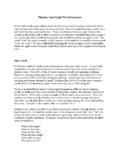Transcription of Transportation: Week 2 of 2 - Minnesota Literacy Council
1 The Minnesota Literacy Council created this curriculum with funding from the MN Department of Education. We invite you to adapt it for your own classrooms. Pre-Beginning Level (CASAS reading scores of 153-180) transportation : Week 2 of 2 Unit Overview In this 2-week unit learners will talk about where they go and how they get there. They will talk about the process of taking public transportation and practice identifying route numbers on signs, schedules, and buses. Focus of Week 1 Where you go and how you get there Focus of Week 2 How to ride the bus and train Recognizing route numbers transportation Unit: Week 2, Monday Objectives Learners will be able Materials Transition & Critical Thinking: use appropriate body language, tone, and intonation in oral communication Life skill: read a simple story about transportation . Literacy : read simple statements about a story and evaluate if they are true or false. Listening/speaking: listen for and record beginning and ending consonant sounds of individual words from a story.
2 Life skill: describe how to ride public transit Listening/speaking: sequence and describe illustrations or video about riding the bus. Transition & Critical Thinking: sequence actions or events in a logical order. Make Student Copies Textbook: Survival English Book 1, 2nd Ed. p. 127 Handout: The Right Bus Make Single Copies or Reference ESL Volunteer Tutor Manual, 2013 Teacher dictation script A few copies of Survival English Book 1, 2nd Ed. p. 127 cut into sets of 7 cards. Props, Technology, or Other Resources One set of large alphabet cards, several sets of small alphabet tiles Lesson Plan Opening Activity: Transition & Critical Thinking Description: practice a basic introduction dialogue with appropriate non-verbal communication and intonation Materials/Prep: (none) Literacy Skills Review Description: choose 1-2 from a list of activities that help learners develop letter/sound correspondence and alphabetical order.
3 Materials/Prep: One set of large alphabet cards, several sets of small alphabet tiles Story of the Week: Life skill, Literacy , Listening & Speaking Description: read a story about the topic, complete comprehension questions and phoneme dictation. Materials/Prep: copies of The Right Bus, one copy of teacher dictation script. Unit Theme Activity: Listening & speaking, Life Skill Description: Use Total Physical Response to introduce and practice language for riding the bus Materials/Prep: copies of Survival English Book 1, 2nd Ed. p. 127, ESL Volunteer Tutor Manual, TPR Checking for Understanding: Transition & Critical Thinking, Listening & Speaking, Life Skill Description: learners sequence and describe pictures about riding the bus. Materials/Prep: a few copies of Survival English Book 1, 2nd Ed. p. 127, cut into sets of 7 cards. Teacher Directions: Opening Activity: Life Skills, Transitions -Materials: (none) Step 1: Model Write on the board: Hi, my name is _____.
4 Hello, my name is _____. Nice to meet you. Nice to meet you, too. Demonstrate both parts of the dialogue using pictures and actions that illustrate two people speaking. Step 2: Whole Group Practice Whole class repeats the conversation. Teacher initiates dialogue with all students responding. Reverse roles (teacher responds to students). Step 3: Peer Practice Students form pairs and practice the dialogue together. Step 4: Focus on Tone and Body Language Demonstrate the dialogue again with a volunteer or student. This time, use inappropriate tone and body language in American culture (slouching, no eye contact, quiet or disinterested tone of voice). Demonstrate again, this time with a strong handshake, eye contact, and a strong confident voice. If able, ask students to describe the difference. Talk explicitly about what Americans like: strong handshake, eye contact, strong voice. Step 5: Mingle or Circle Drill Learners mingle around the classroom, practicing the dialogue and body language.
5 Teacher offers suggestions. Step 6: Extend the Dialogue Once learners have mastered this basic dialogue, extend it with other introduction phrases and questions: How are you? Where are you from? How long have you lived here? What if learners don t want to shake hands? Many immigrants adopt the practice of shaking hands, even if it is not done in their culture. Some immigrants, however, do not feel comfortable shaking hands with people of the opposite sex, or shaking hands at all. Be sensitive to the fact that not everyone is comfortable with this practice, but don t assume that someone will or will not want to shake hands based on their culture. For example, some Somali women never shake hands with men, but some are perfectly comfortable with it. If a learner does not want to shake hands, suggest that they clasp their hands together in front of their chest and nod and smile when introduced. A strong smile and eye contact go a long way toward expressing friendliness.
6 Discourage compromises, such as covering their hand with a sleeve before shaking hands, which may be seen as rude. Teacher Directions: Basic Skills Review: Literacy -Materials: 1.) one set of large alphabet cards, big enough to be seen by whole class, 2.) several sets of small alphabet cards or tiles (lowercase on one side, upper case on reverse) Step 1: Whole Group Practice The following suggestions progress from basic to more complex. Once you are aware of the abilities of your learners, it is not necessary to complete the whole sequence. Begin with an activity that is somewhat easy for most learners and end with an activity that is challenging but not frustrating. 1. Teacher shows a letter flashcard and says the letter name, learners repeat. Introduce and practice 3-5 letters at a time. Once mastered, introduce more. 2. Teacher shows a letter flashcard and learners say the letter name. 3. Teacher shows a letter flashcard and says the letter name then the letter sound, learners repeat.
7 Letter B, sound /b/ 4. Teacher shows a letter flashcard and elicits the name and sound of the letter from learners. Letter? B Sound? /b/ Step 2: Individual and Small Group Practice Depending on the dynamics of your classroom (space, number of teachers) and the abilities of different learners, you can use these activities in a variety of ways. For example, you might model and instruct all learners to do the same activity on their own or in pairs. Or you might group learners by similar ability and assign each group a different activity. Or you might group high and low ability learners together and have one teach or quiz the other. 1. Give each learner or group a set of small alphabet cards. Instruct learners to turn them to the uppercase or lowercase side, depending on the activity you want to do next. 2. Teacher (or another learner) names a letter (or letter sound) and learners point to the corresponding letter card in front of them.
8 3. Learners arrange cards in alphabetical order and then recite the alphabet. 4. Learners separate consonants and vowels and then name them. 5. Teacher gives one learner a list of short familiar words (ie. Man, woman, date). The learner reads the word and spells it aloud. His/her partner listens to the word and its spelling and selects the letter cards to form the word. What letters and sounds should I teach first? There are differing opinions on this question, however, many reading instructors recommend teaching consonant sounds first, followed by short vowel sounds. When introducing consonant sounds, give only the most frequent sound. For example, teach that letter C makes the sound /k/ as in cat. Once learners have mastered this information, they can later be taught that letter C sometimes makes the sound /s/ as in city. Technology Option: Very basic word processing 1. Learners practice turning on a computer and opening a word processing program.
9 2. Learners type the alphabet. To make it easier, the teacher or another learner can dictate the alphabet to them letter by letter. 3. Teacher demonstrates how to use backspace to delete letters. 4. Learners choose 3 letters (preferably not next to each other) to erase. 5. Learners switch computers with a partner, identify the missing letters and type them in again. 6. Learners return to their original computer and check their partner s work. This activity can be adapted if you have only one computer available. Instead of switching with a partner, send one or two students out of the room while the rest of the class erases three letters. Then call them back and ask them to find the missing letters. Teacher Directions: Story of the Week: Literacy -Materials: copies of The Right Bus Step 1: Context 1. Distribute the story and look at the pictures together. Ask: What do you see? What is this? What is he/she doing? 2. Read aloud the questions next to the pictures.
10 Elicit answers from learners. If no one is able to answer after several attempts, model a simple answer (ie. I see people sitting on a bus. I see a place to wait for the bus. ) 3. Pre-teach the word late using examples and pantomime. 4. Ask: Where is the title? Have everyone find and point to the title. Read the title together. Step 2: Practice the Text 5. Give learners a minute or two to quietly look at the text. Some may begin to read at this point. For those who cannot, encourage them to look at the pictures, study the letters, number of sentences, and number of words. This pre-reading of the text may help them build text awareness. 6. Teacher reads the story aloud while learners follow the words with a pencil or finger silently. 7. Teacher reads and learners repeat each line of the story. 8. Practice the text again with choral reading, partnered reading, or individual reading of separate lines of the text. Step 3: assess comprehension 9.
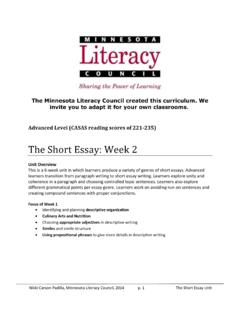
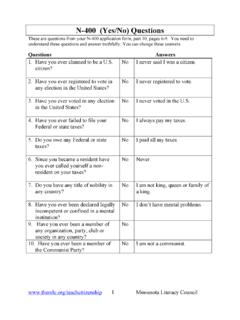

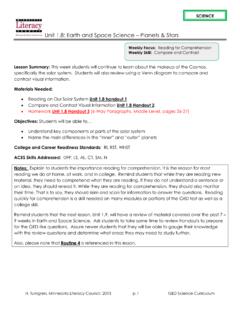

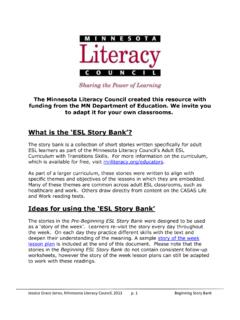
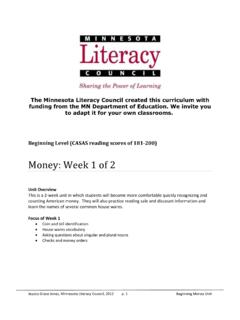
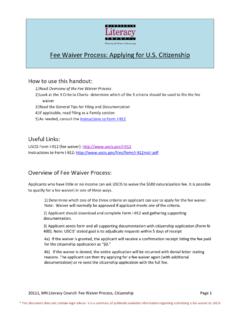
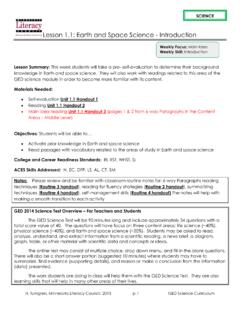

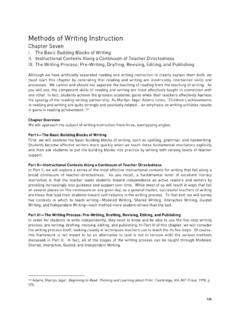
![Boys Section Weekly Agenda [21/1/2018 25/1/2018] Grade 1](/cache/preview/3/c/f/4/e/6/8/4/thumb-3cf4e684011c6a2a6ba82d96c1604014.jpg)
